
Traditional flavor / Artisanship
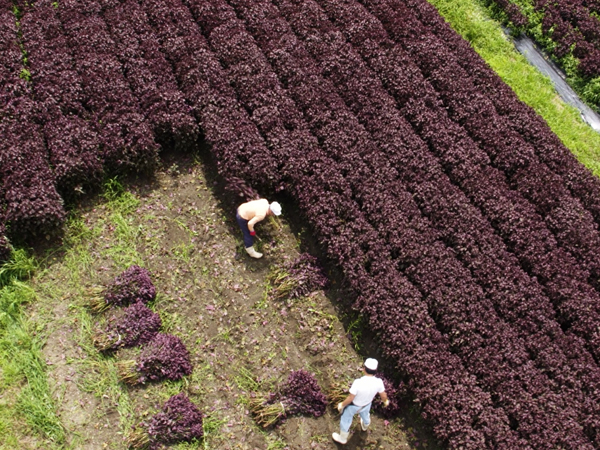
Making Shibazuke begins
with preparing "Chirimen aka-shiso"
grown in Ohara's climate.
DOI SHIBAZUKE HONPO's "Shibazuke" uses "Chirimen aka-shiso", a specialty red perilla grown in Ohara. "Chirimen aka-shiso" has unique characteristics: Its softness, fragrance, and color of the leaves are indispensable for making "Shibazuke" at DOI SHIBAZUKE HONPO. Generally, perilla has been crossbred with other varieties, and it has become difficult to meet the original species. However, the climate of Ohara, surrounded by mountains and extreme temperature differences, has continued to protect the ancient species. In modern times, due to the traffic of people and vehicles, it is easy for species to crossbreed. At DOI SHIBAZUKE HONPO, we put effort to avoid a crossbreed by setting up separated sections to keep this precious heirloom plant in our own farm.
Seeds of "Chirimen aka-shiso" are sown in the cold season of February, and carefully nurtured through manual thinning and replanting. Repotting is a particularly important process. It is a company event in which all employees participate with the spirit of preserving the traditional "Shibazuke" together. The second half of June is harvest time. We harvest only the amount necessary for making “Shibazuke” on that day, and pickle only freshly harvested leaves.
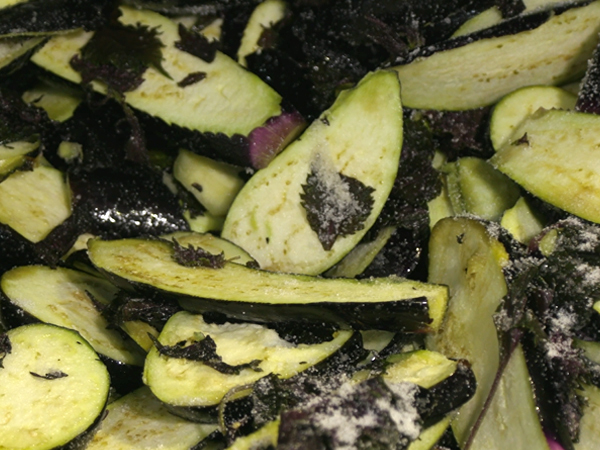
Summer vegetables, salt, and “Chirimen aka-shiso”.
With simple ingredients, we cherish the original recipe and the tradition.
Ingredients for “Shibazuke” are summer vegetables, salt, and “Chirimen aka-shiso”. Because the ingredients are so simple, the quality of ingredients and pickling technique determines the quality of the product.
Eggplant is used for DOI SHIBAZUKE HONPO’s “Shibazuke”. We carefully pickle each eggplant grown by farms in JA* Kyoto Yamashiro district. Through long-term relationships with farmers, they have high aspirations to grow good vegetables for “Shibazuke”. Fertilized until just before the harvest, eggplants are soft no matter what time of year they are harvested, making them an excellent ingredient for the taste and texture of “Shibazuke”.
Eggplants, salt, and "Chirimen aka-shiso" are pickled in special pickling barrels that have been used for many years at our factory. This pickling process contains many traditions and techniques that have been refined through many years of experience.
The center part of the ingredient that is carried into a barrel by the conveyor tends to be higher; so, rocks are placed as weight in the way that the weight is evenly distributed. People in the past said, "Stones have faces." It is an important process of pickling to skillfully pile up the stones of different shapes.
The inner surface of a barrel that comes into contact with the ingredients is called okehada (skin of the barrel). The part of the “Shibazuke” that touches okehada is slightly altered; we remove this part to maintain consistent quality and confidently deliver the best quality “Shibazuke” to customers.
*JA: Japan Agricultural Cooperatives
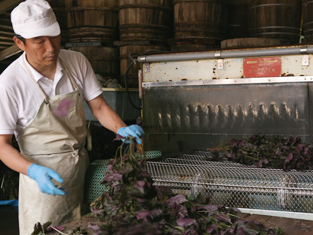
Washing
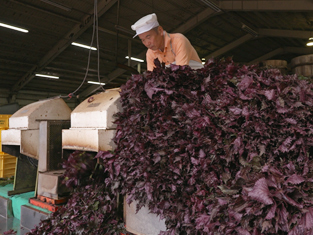
Separating leaves by a thresher
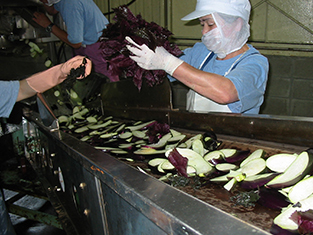
Adding salt and Chirimen aka-shiso to eggplants
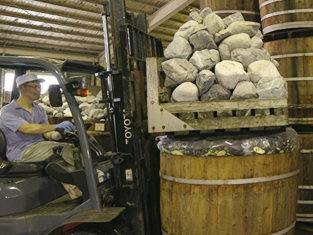
Pickling
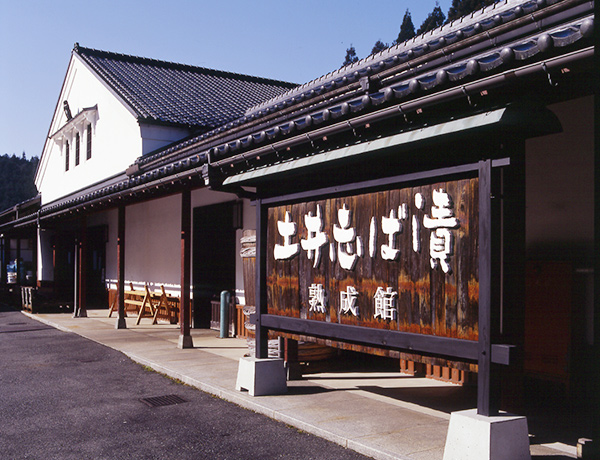
The life of “Shibazuke” is breathed into the
ingredients
through the traditional techniques and methods
cherished by the villagers of Ohara.
In the pickled barrels, weights and salt content drain water and promote lactic acid fermentation. Depending on the season, it can be taken out of the barrel 30 days after pickling.
Lactic acid fermentation requires the action of lactic acid bacteria, but the ingredients used for pickling do not contain lactic acid bacteria. Lactic acid bacteria in the air and in the pickled barrels that have been used for many years act in the pickled barrels and promote fermentation.
Temperature is also important for this lactic acid bacterium to act to make delicious “Shibazuke”. Lactic acid bacteria and temperature are the "fourth ingredient" brought by Ohara's nature.
After 30 days of pickling, Ohara's specialty ingredients are given life as "Shibazuke".
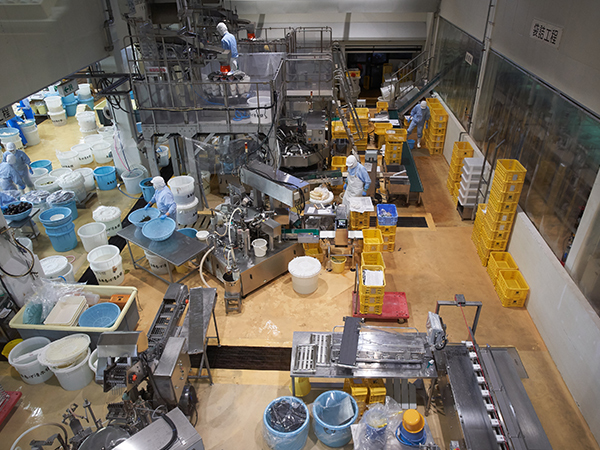
Putting our heart for each package,
we deliver “Shibazuke” to our customers.
Nurtured in the nature of Ohara, "Shibazuke" is carefully packaged one by one in our own factory where hygiene management is thorough, and it finally becomes the product that our customers enjoy.
Many “Shibazuke” packages we prepare will add color and enrichment to customers’ dining experience.
We always cherish this idea and deliver “Shibazuke” with the hope to "provide customers with safe and delicious food."
Our own factory is open to the public and can be visited. Visitors are welcomed to see the final process of making "Shibazuke". The great taste and aroma are carefully sealed under strict hygiene control.

